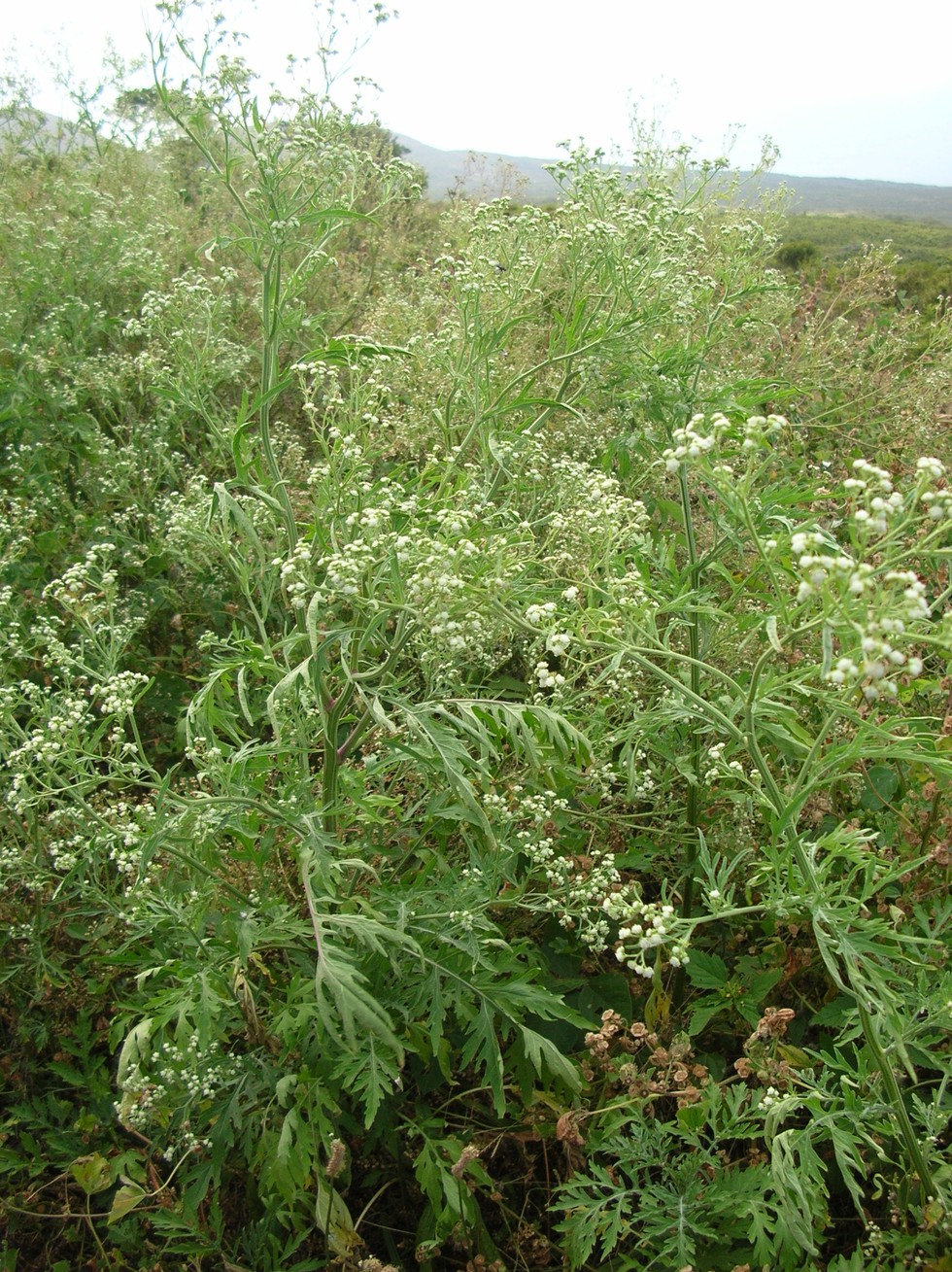About Parthenium:
- Parthenium hysterophorus L., commonly known as carrot weed, white top, or congress grass in India, is an herbaceous, erect, and annual plant belonging to the family Asteracae (compositae).
- It is a poisonous, pernicious, problematic, allergic, and aggressive weed posing a serious threat to human beings and livestock.
- In India, this weed has been considered as one of the greatest sources of dermatitis, asthma, nasal-dermal and nasal-bronchial types of diseases.
- Besides ill effects, it also causes several other problems, like blockage of common pathways, and reduces the aesthetic values of parks, gardens, and residential colonies.
- It is a nuisance on roadsides and railway tracks, vacant lands, wastelands, industrial areas, and on the sides of open drainage systems and irrigation canals, besides invading agricultural crops, orchards, and forest areas.
- It is most popularly known as gajar ghas due to its appearance like a carrot plant.
- The origin of parthenium is considered to be from Mexico, America, Trinidad, and Argentina.
- After the noticeable occurrence of parthenium in Pune (Maharashtra) in 1955, it has spread like a wildfire throughout India.
- At present parthenium has invaded about 35 million hectares of land in India.
- It mainly spreads through seeds.
- A single plant can produce about 5000 – 25000 seeds.
- The seeds are very small in size and light in weight.
Key Facts about Pobitora Wildlife Sanctuary:
- It is located in the eastern region of Guwahati, Assam.
- It was established in 1998 and covers an area of 48.81 square kilometres.
- The Sanctuary consists of the Rajamayong Reserve Forest and Pobitora Reserve Forest.
- Flora:
- 72% of Pabitora consists of the wet savannah of Arundo donax, Erianthus ravennae, Phragmites karka, Imperata cylindrica, and Saccharum spp.
- Water hyacinth (Eichornia crassipes) is a major problem, especially to waterfowl, as it forms thick mats on the water surface.
- Fauna:
- Pobitora is mainly famous for its great Indian One-horned rhinoceros.
- It is known for holding the highest density of Greater One Horned Rhinoceros in the country.
- Besides rhinoceros, the other animals are leopard, wild boar, Barking deer, wild buffalo,
- It is also home to more than 2000 migratory birds and various reptiles.
